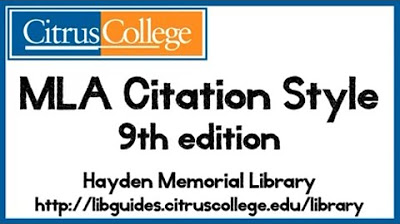What is LITERARY text? Types and examples
Summary
TLDRThis article from essaykeeper.com delves into the world of literary texts, distinguishing them from non-literary counterparts. Literary texts, characterized by their artistic form and emotive content, are not bound by reality and aim to engage readers through beauty and emotion. Examples include novels and poems that convey the author's perspective and are meant for entertainment and aesthetic experience. In contrast, non-literary texts focus on conveying factual information in an objective and realistic manner, such as instructions, recipes, and scientific articles.
Takeaways
- 📚 A literary text is part of literature and writing genres, characterized by artistic form and content, often using a special style to capture the reader's attention.
- 🎭 Literary texts have been a part of human history, reflecting social, political, or religious conditions, and conveying the emotions and feelings of the artist.
- 🌐 The purpose of literary texts is not to inform but to focus on the message, beauty, feelings, emotions, and thoughts intended to convey.
- 📖 Literary texts often use fictional worlds and do not have to stick to reality, unlike informative texts.
- 🖋️ Literary texts may break grammar rules and are known for the unique style of each writer, which defines them as literary artists.
- 📚 They are read for entertainment and spiritual enrichment, not for pragmatic commitments in the reader's life.
- 📖 Fiction is a key element of literary texts, starting from the author's imagination and conveying their view of the world.
- 🤔 Literary texts establish a pact of credibility with the reader, where the reader agrees to read the work as if it were true, despite its fictional nature.
- 🌟 Literary texts have no expiration date and are transmitted from generation to generation, considered valuable for future generations.
- 📝 Types of literary texts include narrative, poetry, and dramaturgy, each with its own form and way of presenting stories or experiences.
- 📜 Non-literary texts, in contrast, aim to transmit information, are objective and realistic, and include types like letters, informative texts, recipes, scientific texts, journalistic texts, administrative texts, and humanistic texts.
Q & A
What is the primary distinction between literary and non-literary texts?
-Literary texts are artistic and focus on conveying emotions, feelings, and the author's point of view, while non-literary texts aim to transmit information objectively and realistically without the same narrative and fictitious elements.
What are the characteristics that define a literary text?
-Literary texts are characterized by their poetic intention, creative freedom, use of literary figures, subjectivity, language that may break grammar rules, entertainment value, fictional nature, credibility, and timelessness.
How do literary texts serve as a reflection of a civilization's social, political, or religious conditions?
-Literary texts, through their narratives and themes, provide insights into the social, political, or religious conditions of the time they were created, reflecting the emotions and views of the society and the artist.
What is the role of literary texts in capturing the reader's attention?
-Literary texts capture the reader's attention by using a special language and style that often has a poetic touch, aiming to provide an aesthetic experience rather than concrete knowledge.
Can you provide an example of how literary texts have been used to convey emotions and feelings?
-Existentialist novels published after the First and Second World Wars used a depressing and pessimistic language and style to convey the emotions and feelings of the time.
What is the difference between literary texts and informative texts in terms of their purpose?
-Informative texts aim to communicate specific messages in a straightforward and explanatory manner, while literary texts focus on conveying beauty, feelings, emotions, and thoughts through a more artistic approach.
How do literary texts differ from non-literary texts in their approach to reality?
-Literary texts often create fictional worlds and tell imaginary events, ideas, or arguments, whereas non-literary texts are based on reality and aim to inform or instruct.
What are the common types of literary texts mentioned in the script?
-The common types of literary texts include narrative, poetry, and dramaturgy, each characterized by their unique forms and styles of expression.
How do non-literary texts serve different purposes compared to literary texts?
-Non-literary texts serve to transmit information, provide specific indications or orders, and are objective and realistic, often using a formal style and impersonal verb forms.
What are some examples of non-literary texts mentioned in the script?
-Examples of non-literary texts include letters, informative texts, recipes, scientific texts, journalistic texts, administrative texts, and digital texts.
How can one differentiate between a literary and a non-literary text when reading?
-One can differentiate by looking for the presence of poetic intention, creative freedom in style, use of literary figures, subjectivity, and a focus on entertainment and emotions in literary texts, as opposed to the objective, informative, and instructive nature of non-literary texts.
Outlines

This section is available to paid users only. Please upgrade to access this part.
Upgrade NowMindmap

This section is available to paid users only. Please upgrade to access this part.
Upgrade NowKeywords

This section is available to paid users only. Please upgrade to access this part.
Upgrade NowHighlights

This section is available to paid users only. Please upgrade to access this part.
Upgrade NowTranscripts

This section is available to paid users only. Please upgrade to access this part.
Upgrade NowBrowse More Related Video

Cara Mengerjakan Tugas 1 untuk Karil Mahasiswa UT - Karya Tulis Ilmiah

Modern Heroes, Modern Slaves? Listening to migrant domestic workers’ everyday temporalities

Format Penulisan Artikel Jurnal

How to use English Articles: THE, AN, A (& NO Article)

MLA Citation Style 9th edition HD

Article 27 of Indian Constitution

SET EXAM - GENERAL PAPER ,REPEATED QUESTIONS | SET EXAM 2022
5.0 / 5 (0 votes)